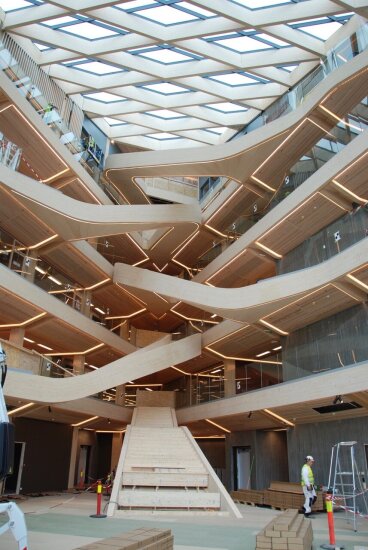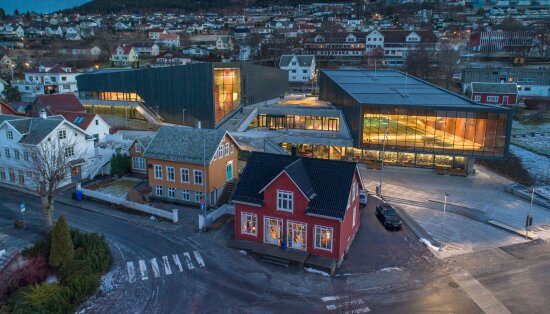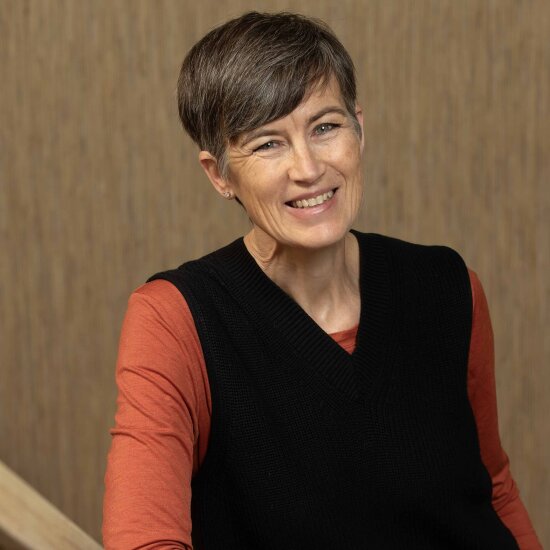Nature is never far away in Norway and continues to be an essential feature of many of our architectural projects. Our buildings are subjected to powerful natural forces, to prolonged periods of ice and snow, along with rain, sun and wind, creating the need for high-quality, durable architecture.
Wood is a widely available, well-known building material, both in today’s construction industry and historically, with our unique stave churches and the long Norwegian shipbuilding traditions.
Also, materials such as stone, steel or glass are used to reflect the surrounding landscape in modern buildings. Some are even designed to appear at one with nature, like Oslo’s opera house which seems to float like an iceberg on the fjord, or at the other end of the scale, Juvet Landscape Hotel, where tiny cabins made from wood, steel and glass are tucked away to become one with the forest.
These are the examples of Norwegian architecture that make international headlines and that most people hear about. But in reality, these are exceptions; they stand out amongst the majority of buildings being built in Norway today. To appreciate the true nature of a broader range of Norwegian architecture, we need to look deeper.

Photo: Jan Inge Haga
From rocky struggles to oil wealth
Despite its relatively large surface area, Norway is actually a barren strip of rocky terrain along the North Sea coast with only 4% arable land. Such conditions do not support large populations. People are few and far between – there are only 13 people per square kilometre in Norway, compared to, for example, 255 people per square kilometre in Great Britain.
Even in the larger cities in Norway, most people live only a short distance from the untouched, stony landscape. Historically, this rocky land has given Norwegians little to work with; at the end of the 1800s, Norway was one of the poorest countries in Europe.
Since the discovery of North Sea oil in the early 1970’s, however, Norway has been one of the wealthiest countries in the world. Even so, the government has been cautious and maintained a practical and restrained attitude, investing a lot of the money into an equality-based welfare system and stashing the rest away into a sovereign wealth fund for a rainy day.
The start of contemporary architecture
This wealth is also the reason for an upswing in Norwegian architecture during the last few decades. Historically, Norwegian architecture was mainly a modest and practical interpretation of continental styles, or sturdy homes and utilitarian buildings. Today, construction is Norway’s largest land-based industry, measured in the number of companies, and the total turnover amounts to about 15% of the country’s value creation.
The oil industry, by comparison, contributes about 22%. About 30% of new buildings in Norway today are designed by architects. Seen in a global context, where only 2% of buildings are designed by architects, this is high, but it is still low compared to how much is being built in Norway at the moment.
That is why the few projects that really stand out are exceptions, but they are important because they highlight innovative thinking and because they have achieved something despite, not because of, the realities of today’s building industry in Norway.
Trends and exceptions
Trying to identify definite trends or generalities in Norwegian architecture can be hard, but we can try to identify what is unique about these exceptional projects, what made them possible and what they might say about future opportunities.

Photo: Diephotodesigner.de
Many of these projects have courageous clients, architects and builders who have reacted to different situations and challenges in Norway today, such as how do we develop sustainable cities? How do we deal with history? How do we react to the natural landscape and to climate change? How do we create spaces where people can meet and interact in ways that are relevant and productive today?
The Norwegian model of an equitable society has no doubt influenced modern architecture, encouraging inclusive and sustainable buildings and environments, both in terms of climate and social aspects.
During the last few decades, Norwegian architects have also attracted considerable international attention and won prestigious international awards, such as the Pritzker Prize that was awarded to Sverre Fehn in 1997, and the Mies van der Rohe award in 2009 to Snøhetta’s opera house in Oslo.
New building projects in Norway are regularly presented in international publications, and the work of smaller practices like Element Arkitekter, Tyin tegnestue, Rintala Eggertsson, Haugen/Zohar, Code or 3RW hold their own alongside more established names like Snøhetta, Jarmund Vigsnæs, Jensen & Skodvin and Helen & Hard. The most successful of their projects are characterised by readable form, simple use of materials and a clear attitude to the landscape as well as social context.

